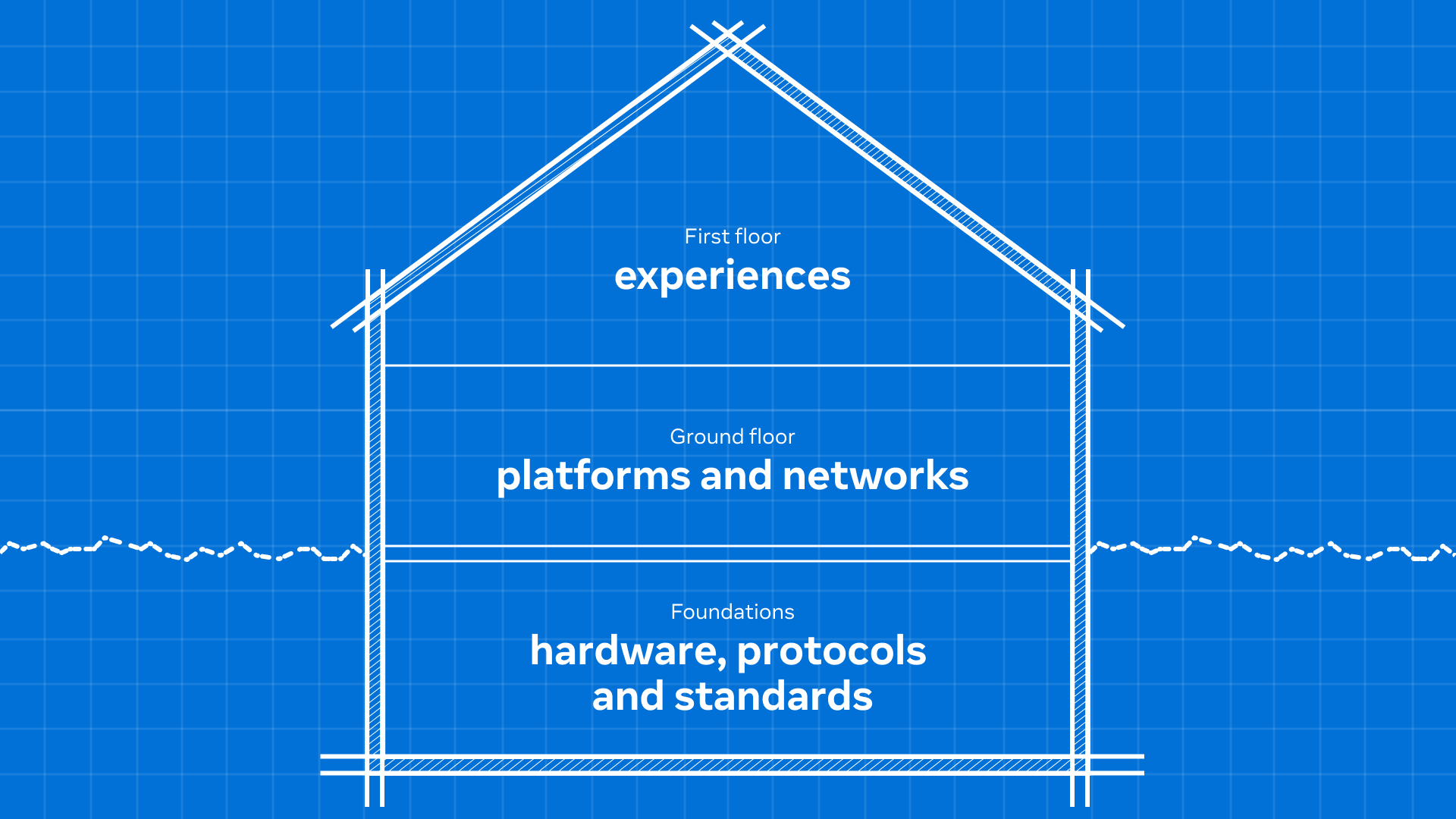This is an abridged version of Nick Clegg’s essay published on Medium.
Many rightly ask: what is the metaverse and why should I care? And even if I can be persuaded that it is worth getting excited about, how can I trust that these new technologies will be built and governed responsibly?
The metaverse is not a single product, in the way Meta’s apps — Facebook, Instagram, Messenger and WhatsApp — are. Nor is it an operating system like Microsoft’s Windows, or hardware like Apple’s iPhone. Like today’s internet, the metaverse will be a constellation of technologies, platforms, and products. It won’t be built, operated or governed by any one company or institution. It will take a range of companies large and small, civil society, the public sector, and millions of individual creators. It isn’t a single piece of cloth, but a patchwork quilt.
The economic possibilities are enticing. The digital economy contributed $2.1 trillion to US GDP in 2019. Even if the metaverse went on to account for the equivalent of just 10% of the pre-pandemic US digital economy, it would be a $200 billion industry, employing somewhere in the region of 770,000 people. A white paper produced for Meta by the independent economic consultancy Analysis Group has estimated the global metaverse economy could be worth more than $3 trillion globally in a decade.
But, for people to actually want to use these technologies, they will need to feel safe. Companies like Meta have a lot of work to do both to build the credibility of the metaverse as an idea, and to demonstrate to people that we are committed to building it in a responsible way. That starts by explaining as best we can what our vision for these technologies is and the challenges we believe will need to be considered as it develops. It means being open and transparent about the work we’re doing and the choices and trade-offs inherent in it. And it means being clear that our intention is not to develop these technologies on our own, but to be one part of a wider technological movement.
A Metaverse Across Borders
There won’t be a Meta-run metaverse, just as there isn’t a ‘Microsoft internet’ or ‘Google internet’ today. Like the internet, the metaverse will be an interconnected system that transcends national borders, so there will need to be a web of public and private standards, norms and rules to allow for it to operate across jurisdictions. One way to think about the structure of the metaverse is to imagine a building, where each floor supports the one above it. For each floor, and within each floor, there will be different kinds of rules and regulations required.
Foundations: Hardware, Protocols and Standards
The foundations of the building include the hardware — phones, VR headsets, AR glasses etc — and the technical protocols and standards that ensure the various technologies can interact, or be ‘interoperable’ in the jargon.
Ground Floor: Platforms and Networks
The ground floor of the metaverse will be built on top of these interoperable protocols and standards. This is the intermediary layer where platforms, institutions and other networks will create the universe of products that make up the 3D worlds of the metaverse.
First Floor: Experiences
The first floor of the metaverse is where you’ll access it as a user, and where the vast array of experiences will be available. Current Quest users, for example, can access the metaverse through social VR apps like Horizon Worlds. Apps and experiences will support the ability for creators to design a multitude of unique spaces.
The common theme across these floors is interoperability — the interconnectedness of standards, systems and applications that enable people to travel seamlessly between one part of the metaverse and another. It isn’t an absolute — not every element of metaverse experiences needs to be, or will be, compatible with others. But without a significant degree of interoperability baked into each floor, the metaverse will become fragmented and broken into silos, each impenetrable from the other.
How We’re Helping to Build the Metaverse Responsibly
We’ve set a number of priority areas that will guide our work together across industry, the public sector, academia and civil society:
- Economic opportunity: how we can give people more choice, and maintain a thriving digital economy
- Privacy: how we can build meaningful transparency and control into our products
- Safety and integrity: how we can help keep people safe on our platforms and give them tools to take action or get help if they see or experience something they’re not comfortable with
- Equity and inclusion: how we can make sure these technologies are designed inclusively and in a way that’s accessible
The World Economic Forum is taking a leadership role in this space by creating a multi-stakeholder network to inform future best practices and governance principles on key societal, ethical and governance challenges involving the metaverse. In particular, it will look into issues around equity, inclusion and accessibility, privacy and safety, economic opportunity and interoperability. This is similar in spirit to the work the WEF recently launched on quantum computing principles.
Meta has also made direct investments in external research and programs through our $50 million global XR Programs and Research Fund. We’re partnering with universities around the world to analyze everything from economic opportunity to ethics and responsible design in the metaverse. And, we’re investing in initiatives to support students, creators and small businesses owners using AR/VR technologies.
Read Nick Clegg’s full essay here.



